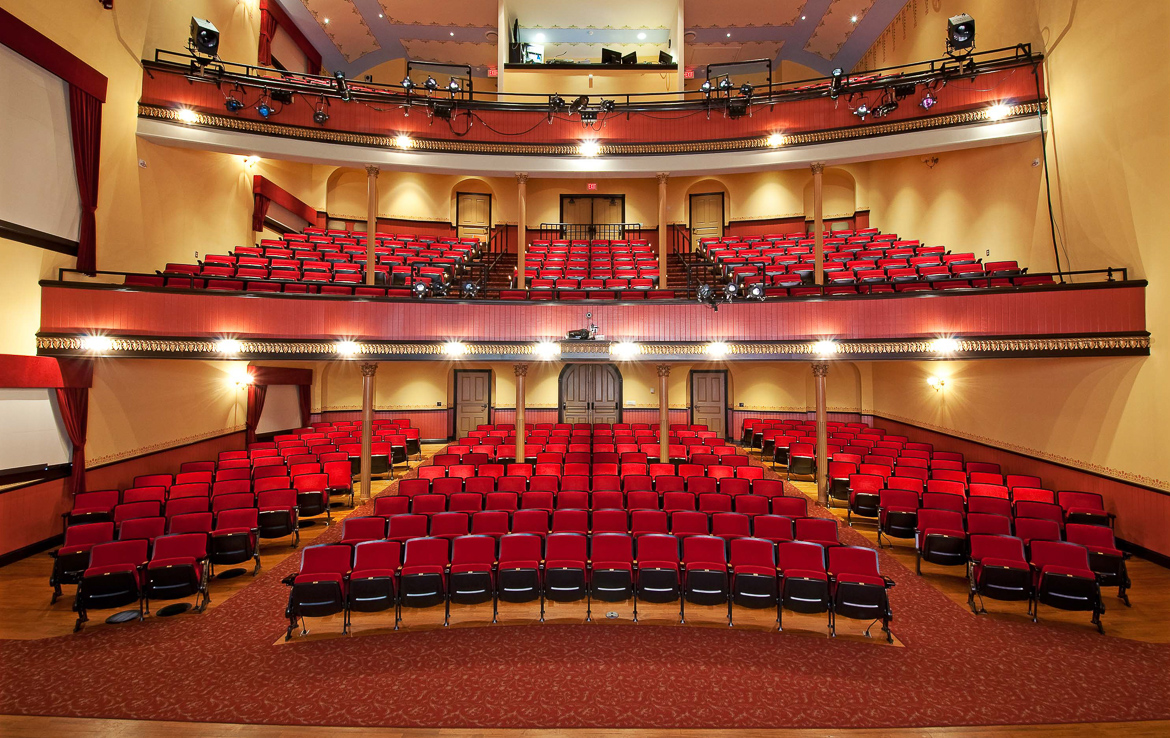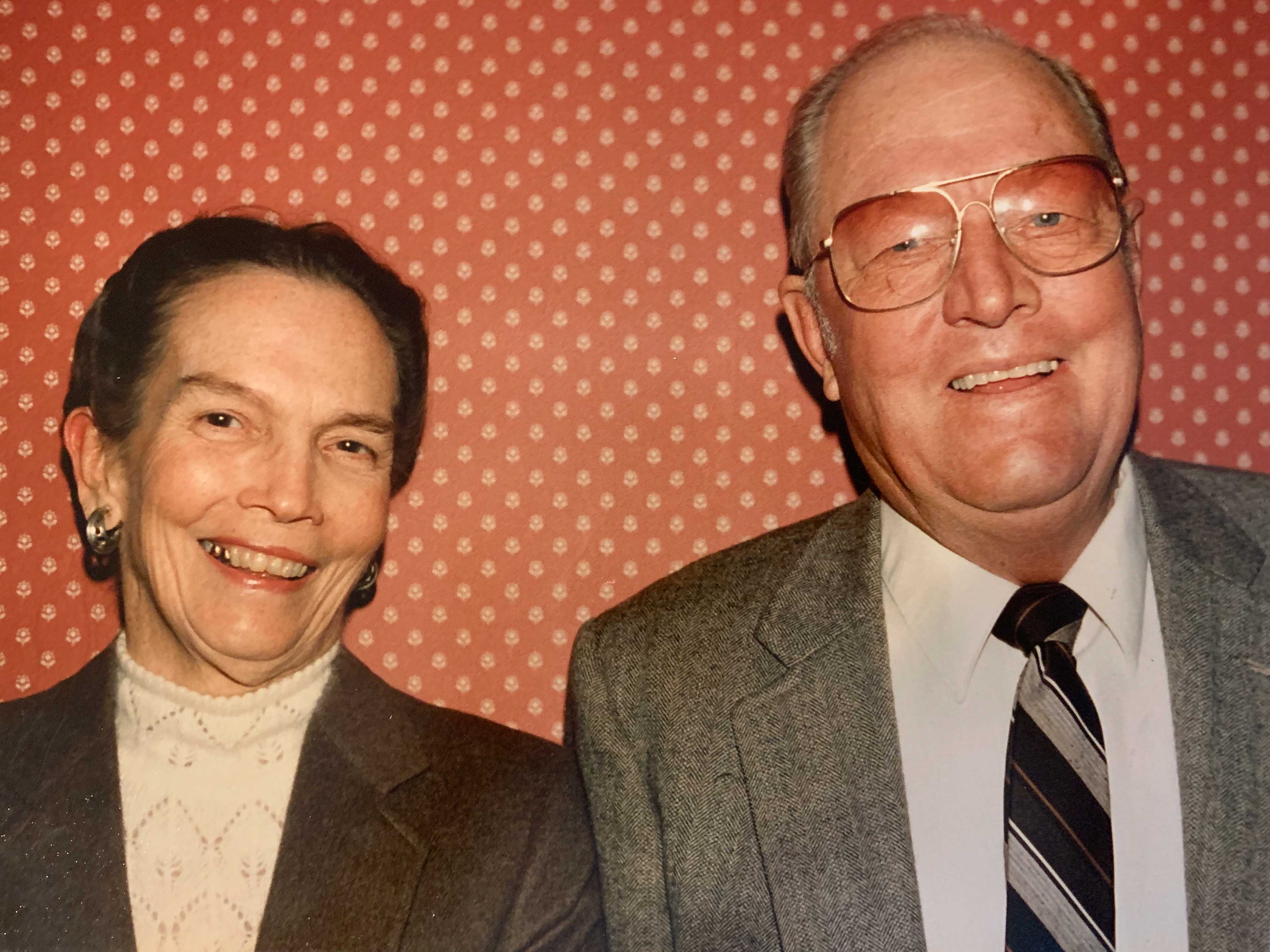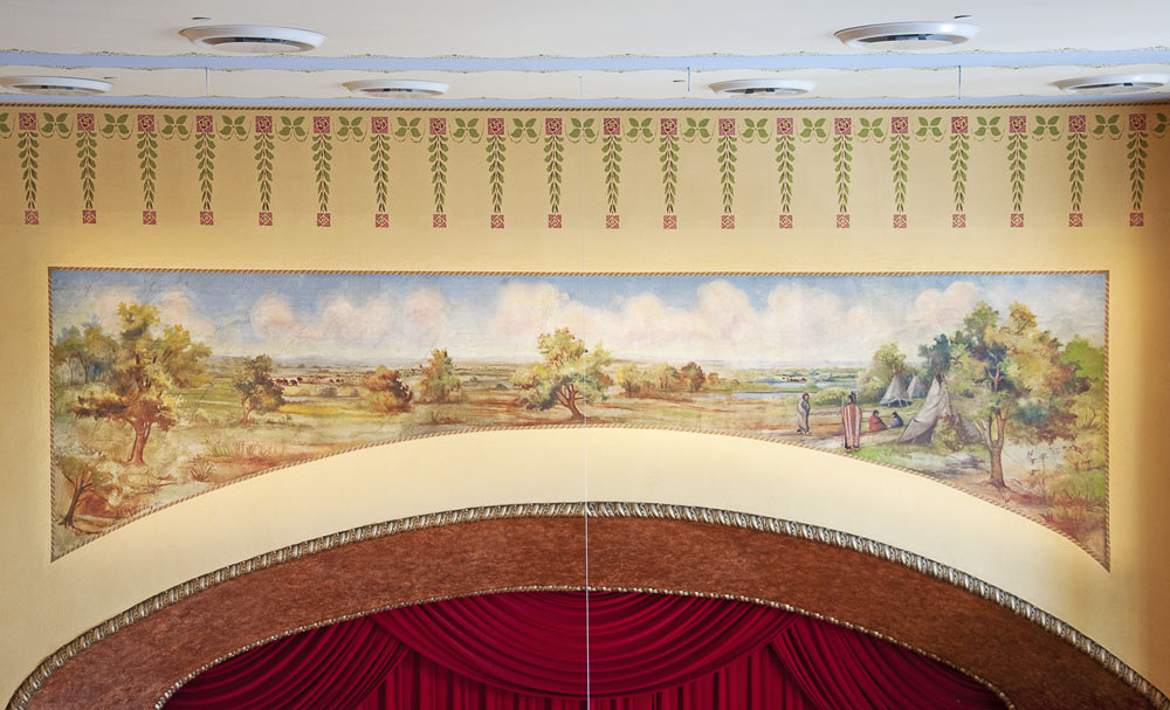Although the auditorium looks much as it might have after the 1913 remodel, everything, in fact, is new. The most dramatic change was rebuilding the second balcony, which restored the space to the much more pleasing architectural ensemble intended by the original architect, George Shaffer of Abilene.
The historically correct seating, provided by American Seating Co., has been sized to contemporary standards, and the auditorium, on its three levels, seats 488. EverGreene Painting Studios did preliminary work on the restoration of the mural and also uncovered, through a reveal window, the original 1888 stencil pattern, which has been recreated in the Grand Ballroom. Belle Restoration restored the mural and recreated the original 1913 G. N. Malm decorative scheme.
Built, as it was, before the advent of amplification, the auditorium has excellent natural acoustics, something immediately noticed by performers. The auditorium is also outfitted with a Christie 4K Digital projection system and Dolby Surround sound. A 20-foot screen specially optimized for high- definition video provides stunning image quality.



